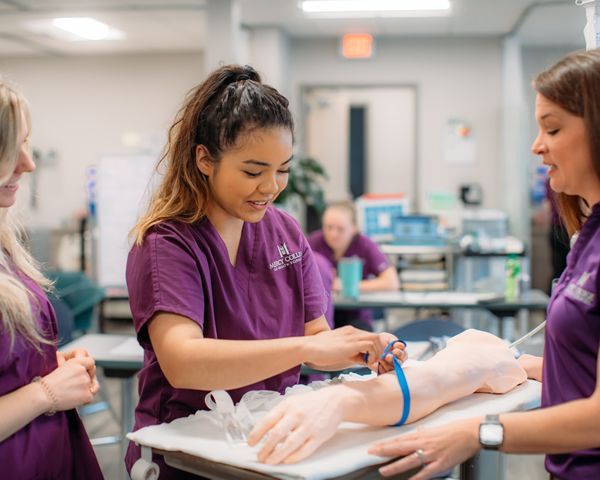
Deciding which college to attend can be one of the toughest decisions for high school seniors. With so many options, it’s easy to feel overwhelmed and unsure. If you’re struggling to make your final decision, here are some tips to help you sort through your choices.
Choosing a college is a big decision, but stressing out won’t help. Take a deep breath and remember that you have time. The decision deadline is May 1, so there’s no need to rush. Sometimes, taking a break from the decision-making process to relax or do something fun can help clear your mind. If you’re feeling pressure from parents or friends, tell them you need more time to decide.
Before comparing colleges, it’s important to start with yourself. Reflect on what you want in your college experience. Make a list of qualities that matter most to you—think about academics, campus culture, size, cost, location, and more. It’s also helpful to consider less tangible things such as the social atmosphere and overall "feel" of the campus. Once you’ve written your list, rank the factors based on their importance to you. This step helps you get clear on your priorities before diving into comparing schools.
While it’s tempting to compare colleges right away, it’s best to evaluate each school on its own first. Look at each school’s strengths and weaknesses based on your prioritized factors. If you don’t have enough information about a particular school, take time to research further. Visit the campus if possible, check out the website again, and talk to current students, faculty, or admissions staff.
Don’t forget to trust your gut feelings about each school—your intuition can play an important role in making the right decision.
After evaluating the schools, you’ll probably realize that some just aren’t a good fit for you. It’s okay to let those go. Remember, you can only attend one college, so don’t feel bad about eliminating options. It’s also a good time to let go of schools that no longer work out, whether that’s because you didn’t get in, didn’t get enough financial aid, or circumstances have changed. It can be hard to let go of schools you were once excited about, but try to focus on the great options that are still available to you.
Still torn between a few schools? Try comparing them in pairs. Create a chart with the schools along the top and the qualities you want down the side. For each pair, mark which school better matches each characteristic. This method will help you make a more objective decision by comparing each school based on what’s most important to you. Once you finish, you’ll have a clearer idea of which school stands out as the best fit.
There’s no such thing as the perfect college. It’s easy to feel like you need to be 100% sure that your choice will guarantee happiness and success, but that’s simply not the case. Your college experience will be shaped by how you approach it, not just by the name of the school you choose. Once you’ve made your decision, move forward confidently, knowing you’ve made a thoughtful choice and that this next chapter will be an exciting one.

Artificial Intelligence (AI) is transforming the world, changing how we work, learn, and make decisions. Universities are responding by updating courses and programs to prepare students for careers in an AI-driven future. While some worry about AI’s impact on jobs, ethics, and education, colleges are embracing it as both a tool and a subject of study.
Students who understand, analyze, and apply AI across different fields will have a significant advantage in the job market. AI is no longer confined to computer science; it’s essential in business, media, medicine, and the arts. Those who grasp AI’s potential and limitations will be positioned to lead industries increasingly reliant on technology, data-driven decision-making, and automation.
AI isn’t just for tech students. Small colleges, even those without specific majors in AI or engineering, incorporate AI into philosophy, ethics, and media studies, helping students critically examine its role in society. For example, at Pomona College, Bowdoin College, and Wesleyan University, students explore AI ethics, bias in machine learning, algorithmic decision-making, and AI’s influence on democracy and privacy. These courses encourage discussions on responsibility in AI development and policy.
Courses at Brown University examine AI through modern culture and media, where students analyze AI-generated content like deepfake videos and AI-written articles. Swarthmore College courses link AI to cognitive science, studying how machine learning mimics human decision-making. Meanwhile, the Rochester Institute of Technology and the University of Arizona programs incorporate AI into digital humanities and computational linguistics, offering hands-on work in natural language processing and AI-assisted creative writing. These programs highlight AI’s broader impact on communication, culture, and society.
As AI becomes integral to business, universities are training students to apply AI-driven strategies in finance, marketing, and supply chain management. USC’s Marshall School of Business offers an AI for Business program, where students learn predictive analytics, customer insights, and automated decision-making. Case studies explore AI’s role in optimizing digital marketing and logistics. At the Wharton School, students use AI-powered analytics for market forecasting and financial risk assessment. Similarly, the University of Texas at Dallas integrates AI into business analytics, offering hands-on experience with AI-driven customer insights, fraud detection, and automation tools used by major corporations. These programs showcase AI’s transformative impact on business and the growing demand for AI-savvy professionals.
For students drawn to AI’s technical side, universities are at the forefront of AI research in robotics, deep learning, and autonomous systems. While institutions such as MIT, Carnegie Mellon, and Stanford continue pushing AI innovation, AI-focused education is expanding.
Georgia Tech offers an AI minor available to all disciplines, ensuring that business, humanities, and science majors gain AI literacy. The University of Michigan and UC Berkeley provide AI tracks in computer science, covering reinforcement learning, generative AI, and AI-driven cybersecurity. Oregon State University and Cal Poly SLO emphasize industry collaboration, partnering with companies to solve real-world AI challenges in automation and software development. These programs make advanced AI education more accessible and emphasize practical applications.
AI is shaping industries beyond STEM, particularly healthcare and gaming. The University of Texas at San Antonio (UTSA) offers a Dual Degree in Medicine and AI, training future doctors to integrate AI into diagnostics, personalized treatment, and robotic-assisted surgeries. AI-powered tools, such as machine learning models for radiology and AI-driven drug discovery, are revolutionizing medical care and research.
AI is also transforming gaming. At UC Santa Cruz, the Games and Playable Media program explores AI-driven storytelling and dynamic gameplay. AI is used in procedural content generation, allowing game environments to evolve based on player behavior, and in designing intelligent non-player characters (NPCs) that adapt and respond more realistically. These programs highlight AI’s growing influence in creative and interactive fields.
As AI reshapes industries, universities are preparing students to navigate this evolving landscape. By integrating AI education across disciplines, colleges are not just teaching technical skills but also encouraging critical thinking about AI’s ethical and societal impact. Whether students engage with AI
through liberal arts, business, or technical studies, they will have opportunities to apply this technology in meaningful ways.
For high school students planning their futures, AI literacy is becoming essential, opening doors across a wide range of careers, some of which don’t even exist today. As universities expand AI-related programs, students will have more opportunities than ever to explore how AI can shape their professional paths, regardless of their chosen field.
Careers for AI Majors
Liberal Arts & Interdisciplinary Studies
AI Ethics Consultant
Digital Media Strategist
Computational Linguist
Business & Industry Applications
AI-Driven Market Analyst
Financial AI Analyst
AI-Powered Supply Chain Manager
STEM & Engineering
AI Research Scientist
Autonomous Systems Engineer
AI Cybersecurity Specialist
Medicine & Gaming
AI Healthcare Specialist
AI Game Designer
Biomedical AI Engineer

Your teen has just received their college acceptance letters, and one of those schools is their first-choice college—exciting news! But then, the reality sets in: the merit aid awarded is lower than expected, and now that “favorite college” feels like it may be financially out of reach. What do you do next?
The good news is that it’s possible to ask for a higher scholarship award through a merit-based appeal. While merit aid is not given based on financial need, many colleges will review requests for more aid, particularly if there are new or updated circumstances that weren’t part of the original application.
Before doing anything, review the college's merit-based appeal process on its website. Look for information on deadlines and required documentation. It is also important to find the name of the office or person to whom you should address your appeal. Students should write a concise letter that is kept to one page .
Make sure you understand the requirements for submitting an appeal and any deadlines involved. In a merit-based appeal, your teen will need to write a letter to the admissions office. Here are the key components to include:
Start by expressing genuine excitement and gratitude for being accepted to the college. This shows that your teen values the opportunity and is thankful for the initial offer.
If any academic or extracurricular developments have occurred since the original application, this is the time to mention them. Whether it’s a higher GPA, new awards, leadership roles, significant achievements, or if there have been any extenuating circumstances that weren’t in the initial application, it should be explained in this letter. These updates can strengthen the case for why your teen deserves more merit aid.
Your teen should also emphasize why this particular school is the best fit for their academic and professional goals. Highlight specific programs, faculty, or resources at the school that align with their aspirations.
Make it clear that while this college is their preferred choice, the cost of attendance is a major factor in their decision-making process. It’s essential to be transparent but polite in expressing the financial challenge the current aid package presents. This should never come across as demanding but rather as a way to provide context for the request.
After your teen sends the letter, it’s important to follow up with a polite email or phone call to ensure the admissions office has received the appeal. This will also provide an opportunity to answer any questions or provide additional information if necessary.
It's important to have realistic expectations. Some colleges may only be able to offer an additional $2,000 to $5,000 in merit aid, if any. While this can help reduce the gap, it may not fully cover the difference between what was awarded and what your family can afford.
If the financial package still makes the college unaffordable, it may be necessary to reconsider other options, including colleges with more generous financial aid or scholarships.
By helping your teen write a thoughtful and respectful merit-based appeal letter, you’re also giving them an important life lesson in advocating for themselves in a professional setting. It’s a chance to demonstrate maturity and clear communication while navigating a situation that many students face as they head into college.

The application requirements for most colleges in the US include a letter of recommendation from the student's high school guidance counselor and often one or two of their classroom teachers. These letters provide colleges with insight into who you are beyond your grades and test scores. Typically, there are two main types of recommendations you’ll need:
Colleges often ask for letters from teachers who have taught you in core subjects such as English, math, science, social studies, or a world language, preferably during your junior or senior year. The teacher you ask should be someone who knows your academic strengths well and can speak about your potential for success in college courses.
A letter from your school counselor gives colleges a sense of your role within the school community. Many counselors are busy and may not know every student personally, and colleges understand this. However, some colleges require letters of recommendation from the counselor as they value the counselor’s perspective on your academic journey and personal character.
Teachers are busy professionals, and writing a recommendation is a favor they’re doing for you. Here’s how you can make their job easier:
High schools, colleges, and individual teachers may have specific guidelines for recommendations. Before asking for a letter, make sure you’re clear on the requirements and deadlines for both your school and each college.
Pick teachers who can write a personal and thoughtful recommendation. A teacher who knows you well and can speak to your work ethic and character will provide a strong letter.
Request recommendations well in advance—ideally, at the beginning of your senior year or even before the end of junior year. Waiting until fall can be risky, as teachers and counselors will be overwhelmed with requests by then, and they may not have enough time to write a letter for you.
Provide your recommenders with at least a month’s notice before the application deadline. Writing a great recommendation letter takes time, and the earlier you ask, the better.
Never demand a letter. Instead, politely ask, “Would you be willing to write a positive letter of recommendation for me?” If someone declines, don’t take it personally. Thank them and move on to another teacher.
Many schools ask students to complete a questionnaire or "brag sheet" to help recommenders write a more detailed letter. Be thorough and turn it in early, giving your writers plenty of time to review your achievements.
Lastly, once your letters are complete, take the time to thank your recommenders. Also, keep them updated on your college admissions results. They’ll appreciate hearing about the outcome of your applications!

Okay students, let's be real. Your life is probably all over social media. From TikTok dances to Insta-worthy sunsets to those hilarious Snapchat streaks, it’s how you connect, express yourself, and keep up with everything. But here's a thought that might make you pause before your next post: colleges might be watching. Yes, admission officers could be scrolling through your feeds, and what they see might impact your future.
Are colleges checking your social media? While not guaranteed, it's possible. Think of it this way: Admissions officers want to see beyond your academic achievements. A survey found that 28% actually review applicants' online presence. An admissions officer would investigate your social media accounts if they receive reports about harmful content about an admitted student. Check your privacy settings and use caution when sharing your social media account.
Let's talk about the worst-case scenario. Remember that story about Harvard rescinding offers to students who shared offensive memes? Or the student who lost their spot after a questionable video surfaced? No college wants a student who will bring negativity or controversy to campus.
Use social media to your advantage. Flip the script and view it as a tool to boost your college chances. Think of it as your chance to shine. Did you win an award? Crush a volunteer project? Create something amazing? Share it! Colleges love seeing passionate, driven students. Another smart move? Engage with the schools you're interested in. Follow them, comment thoughtfully on their posts, and show some love for their campus vibes.
Basically, think of your social media as your personal brand. What do you want it to say about you? Does it showcase your interests, your personality, and your goals?
Before you freak out, take a deep breath and do a little social media spring cleaning. Scroll back through your profiles and ask yourself, "Would I want a college admissions officer to see this?" “ Would you want a grandparent to see your post?” If the answer is no, then get rid of it! Adjust your privacy settings, Google yourself to see what comes up, and remember that even private posts can sometimes find their way into the public eye.
Bottom line? Social media is powerful. Use it wisely, show your best self, and make sure your online presence reflects the amazing person you are. Because when it comes to college admissions, you want to be ready for your close-up.

There are roughly 311 different languages spoken in the United States alone, with more than 6,500 languages spoken worldwide. Globalization and increasing communication with foreign countries have increased the need for bilingual speakers. By entering into the field of World Languages or Linguistics, you will not only master a second language but will also enhance your perspectives as you learn to value other cultures and build connections with others who speak another language.
As global interconnectedness continues to grow, the value of language skills and linguistic knowledge has never been higher. For college-bound high school students considering their future majors, both world language studies and linguistics offer exciting and rewarding paths.
Majoring in a foreign language involves immersing yourself in both the language and culture of specific regions or countries. This field is ideal for students who want to develop language proficiency (speaking, reading, writing, listening), enjoy learning about new languages and cultures, aspire to work in international settings, and have a passion for travel and cross-cultural communication.
Language majors typically focus on language proficiency, literature of the target language, history and culture of relevant countries, and area studies. Popular language majors include Spanish, Chinese, Arabic, French, and German. For example, a Spanish major at the University of California, San Diego might take courses such as Spanish Composition, Introduction to Hispanic Literature, and Spanish Phonetics. Grinnell College offers a Chinese major with classes in Reading Chinese Literature, Chinese Food for Thought, and Modern China through Literature and Film.
An overlooked language major is American Sign Language (ASL). ASL is used by over half a million people in the U.S. and is the fourth most studied language at colleges and universities. California State University Northridge offers a Deaf Studies Major with concentrations in ASL/English Interpreting, Deaf Community Services, and Deaf Cultural Studies.
Unlike world language majors, linguistics students may not become fluent in multiple languages but, rather, gain a deep understanding of how languages work. This knowledge is applicable across various languages and contexts.
Linguistics is the scientific study of language itself. This major is suited for students who are fascinated by the structure and evolution of languages, enjoy analyzing patterns and solving puzzles, and are interested in the cognitive aspects of language use.
Linguistics majors typically study language structure, language acquisition and development, historical linguistics, sociolinguistics, and computational linguistics. For instance, a linguistics major at the University of Connecticut might take courses such as Phonology, Syntax and Semantics, and Language Acquisition. At The University of Colorado, Boulder students can choose a track such as Computational Linguistics, Socio-Cultural Anthropological Interactional Linguistics, Teaching English to Speakers of Other Languages, or Cognitive Linguistics. When deciding between these majors, consider your personal interests and career goals. World language studies offer direct language skills and cultural knowledge, while linguistics provides a broader, more analytical approach to language.
Both majors cultivate critical thinking, communication skills, and cultural awareness – attributes highly valued by employers across industries. Whichever path you choose, you'll be well-equipped to thrive in our increasingly interconnected world.
Careers for Language Majors
- International business and banking
- Diplomacy and international relations
- Tourism and hospitality
- Journalism and media
- Education and translation services
- Speech therapy and language pathology
- Natural language processing and AI development
- Forensic linguistics
- Lexicography and dictionary creation
- Teaching English as a second language
- Sign Language Interpretation· Speech Language Pathology
- Health Care Interpretation

As college costs continue to rise, parents of college-bound students are increasingly turning to 529 plans as a strategic way to save for their children's education. Named after Section 529 of the Internal Revenue Code, these tax-advantaged savings accounts offer a powerful combination of financial benefits and flexibility that can make a significant difference in funding higher education.
A 529 plan is a state-sponsored investment account designed specifically for education savings. These plans allow parents, grandparents, or other interested parties to contribute after-tax dollars into an account that grows on a tax-deferred basis. The key advantage is that when funds are withdrawn for qualified education expenses, they are not subject to federal income tax. Additionally, many states offer their own tax benefits, such as deductions on contributions or tax-free withdrawals for state residents.
There are two types of 529 plans:
Education Savings Plans:
These function similarly to retirement accounts, where contributions are invested in mutual funds or other investment vehicles. The account's growth is dependent on market performance.
Prepaid Tuition Plans: These allow families to purchase credits at participating colleges and universities at current prices, effectively locking in tuition rates and protecting against future increases.
To maintain their tax-free status, funds withdrawn from a 529 plan must be used for qualified education expenses. These include:
Tuition & Fees:
This is the primary use of 529 funds, covering costs at eligible postsecondary institutions, including colleges, universities, vocational schools, and even some international schools.
Room & Board:
For students enrolled at least half-time, 529 plans can cover on-campus housing or off-campus housing costs up to the amount determined by the school's official cost of attendance.
Books & Supplies:
Textbooks, required reading materials, lab supplies, and other necessary academic supplies are eligible expenses.
Technology:
Computers, software, printers, and internet access required for coursework are eligible.
Special Needs Equipment:
For students with disabilities, specialized equipment necessary for enrollment or attendance is an eligible expense.
Student Loan Repayments:
Up to $10,000 can be used to pay off qualified student loans for the beneficiary or their siblings.
One of the most attractive features of a 529 plan is its flexibility. If your child decides not to pursue higher education, receives a substantial scholarship, or chooses a less expensive school, you have options: change the beneficiary, use it for other educational pursuits, or hold it for future use.
529 plans offer numerous advantages that make them an attractive option for college savings:
Tax Benefits:
The primary draw of 529 plans is their tax-advantaged status. Contributions grow tax-free, and withdrawals for qualified expenses avoid federal taxes. Many states also offer additional tax incentives for contributions.
High Contribution Limits:
Unlike other savings vehicles, 529 plans typically have high contribution limits, often exceeding $300,000 per beneficiary, depending on the state.
Estate Planning Benefits:
Contributions to 529 plans can reduce your taxable estate. Special provisions even allow for accelerated gifting, where you can make five years' worth of gifts in a single year without triggering gift taxes.
Financial Aid Friendly:
Assets in a 529 plan owned by a parent have a relatively small impact on financial aid eligibility compared to assets held in the student's name.
Low Maintenance:
Once set up, 529 plans require minimal ongoing management, especially if you opt for age-based portfolios that automatically adjust as your child nears college age.
While 529 plans offer significant benefits, it's important to be aware of potential drawbacks:
Investment Risk:
Like any investment, 529 plans can lose value, especially in market downturns.
Non-Qualified Withdrawals:
If funds are used for non-qualified expenses, earnings are subject to income tax and a 10% penalty.
For parents of college-bound students, a 529 plan is a powerful tool to save for education while minimizing tax burdens. Offering tax-free growth, flexibility in use, and potential state tax benefits, these plans can significantly ease the financial strain of higher education costs.
As with any financial decision, it's crucial to thoroughly research your options and consider consulting with a financial advisor to determine if a 529 plan aligns with your overall financial strategy. By understanding the uses, benefits, and potential limitations of 529 plans, families can make informed decisions to better prepare for the rising costs of higher education, ensuring that their savings work as efficiently as possible to support their children's academic aspirations.

As parents of sophomores and juniors schedule flights, rent cars, make hotel reservations, and book spring break campus tours, this whole “college thing” becomes eerily real.
Two experienced parents who have recently completed college visits and have come out the other side smiling share their advice:
“I would say that the best thing we did regarding campus visits was to start early. We looked closely at upcoming days off, vacation days, and even teacher/staff development days. If you wait until summer, you may not get a “real” feel of the campus dynamics. We made a point of visiting most schools at two different times to get an idea of school spirit, study habits, and student engagement. I also learned that colleges offer specialized sessions (engineering, business, honors college, etc.) only on certain days of the week.”
One parent realized she was embarrassing her teen on a few tours when she asked one too many questions. “For me, I need to know everything about the school.” Some questions seemed appropriate in the large group setting, and I left others until we were on the student-led tour. I did ask about traditions on campus, study abroad options, and the quality of the career services center.” Our advice - parents should ask questions when they must, but leave the bulk of the questions to their child.
This parent’s best advice is to ask your child to write down their thoughts about the college immediately after settling back in the car because one school can look just like the rest. “I tried not to give my opinion before my child did. I didn’t want to color their observations,” I would ask questions and then wait until they were all finished to give my opinions.
The parents of the second family, whose teen ultimately applied for Early Decision, started preparing in their sophomore year because they felt it was important for their child to have a good working knowledge of each school prior to a visit. They made sure to ask the same questions on each visit.
You may also find that one visit simply isn’t enough. Families can later take advantage of Open Houses or Discovery Days offered by the schools, which provide even more information. Remember that schools also offer wonderful virtual visit options. Families who want to learn more about a school can register for the virtual information sessions.
Visiting college campuses can be eye-opening and very informative. Try to enjoy the process of researching and touring college as it can get overwhelming at times. Beyond the college campus, take time to visit the local town. Find a local ice cream store, independent bookstore, or something that your teen would enjoy. Cherish your journey together.

When most families envision the college journey, they picture the classic scene: moving into dorms on a fall day alongside hundreds or thousands of other freshmen. While this traditional path works well for many students, colleges now offer several alternative start dates that might better suit your child's needs and goals.
These alternative starts can provide valuable flexibility for students who want or need a different timeline. Some students benefit from extra preparation time, while others might find that a non-traditional start actually increases their chances of attending their school of choice. Many families are surprised to learn about these options, which often first come up during the application process.
Spring start programs, beginning in January, can be particularly appealing. Universities frequently offer these programs because they know some students will graduate in December, opening spots for new arrivals. A spring start gives students additional time to prepare for college life and often means joining a smaller group of new students, potentially making the transition easier. Some colleges even offer spring admission to waitlisted students, making it a valuable path to eventually attending your preferred school.
Summer start programs offer another excellent option, typically through "bridge programs" that help students adjust to college-level academics.
The quieter summer atmosphere allows students to acclimate to campus life with fewer distractions, and they can spread their first-year coursework more evenly across three semesters instead of two.
Some university systems provide even more creative options, such as starting at a partner institution or different campus before transferring to the main location. Examples include beginning at a local community college or attending specialized freshman campuses such as Boston University College of General Studies, Northeastern University Scholars Program, and Middlebury College February Program.
However, families should carefully consider potential trade-offs. Traditional fall starts typically offer the fullest range of social opportunities, campus resources, and course selections. Students joining mid-year might miss some traditional freshman experiences or face more challenging course registration.
When exploring these options, ask colleges specific questions about how they support alternative-start students. Understanding the available resources and potential challenges will help your family make an informed decision that aligns with your student's goals and preferences.
Remember, there's no universal "right way" to begin college. The best choice is the one that sets your student up for success, whether that's a traditional fall start or an alternative path.

Private colleges across the United States have expanded their merit-based aid programs in response to competition from public institutions and affordability concerns. This strategy has made private education more accessible to middle-income families. According to the
National Association of College and University Business Officers, private nonprofit colleges reached a record average tuition discount rate of 56.1% for first-time, full-time students in 2023-24, meaning families typically pay less than half the published tuition rate.
Most highly-selective colleges only provide need-based financial aid. Many other selective private colleges have developed robust merit scholarship programs to attract exceptional students. These programs particularly benefit families who earn too much for substantial need-based aid but struggle with annual college costs exceeding $70,000. Top-tier institutions like Emory University, University of Southern California, and Duke University offer
competitive merit scholarship programs that can cover full tuition and additional expenses. Selection typically requires exceptional academic achievement, leadership experience, and community engagement, often involving interviews and supplemental essays. Less competitive options are the University of Rochester, Fordham University and Southern Methodist University.
Guaranteed scholarship programs have also expanded, offering assured funding based on specific academic criteria, typically combining GPA and standardized test scores. The test-optional movement has led many institutions to create alternative pathways for merit scholarship consideration, including portfolio reviews and comprehensive achievement evaluations. Many schools continue to offer guaranteed scholarships to National Merit Scholarship finalists, with some increasing award amounts to match rising costs.
Private colleges offer distinct advantages beyond financial considerations. Their student-centered learning environment, with smaller class sizes and frequent professor interaction, creates valuable opportunities for mentorship and collaborative research. These institutions have generally maintained strong student support services, including comprehensive academic advising, career counseling, and learning support services, while many public institutions face resource constraints.
The focus on holistic student development often results in stronger alumni networks and career placement services, offering long-term professional advantages. Additionally, private colleges maintain higher four-year graduation rates compared to public institutions, leading to potential savings through reduced tuition costs and earlier workforce entry.
As families evaluate college options in 2025, looking beyond published tuition rates is essential. Merit scholarships have transformed private colleges' financial accessibility, making them viable for many families who might otherwise dismiss them based on sticker price. The key is thorough research and strategic application, as well as understanding that strong academic performance can unlock significant merit aid opportunities.
For students beginning their college search, the message is clear: don't let initial price tags deter you from considering private colleges. With careful research into merit scholarship opportunities and a strong academic record, a private college education may be more affordable than anticipated when considering the total value of the educational experience and time to graduation. The transformation in college financing through expanded merit aid programs has created new opportunities for students to access private education.

